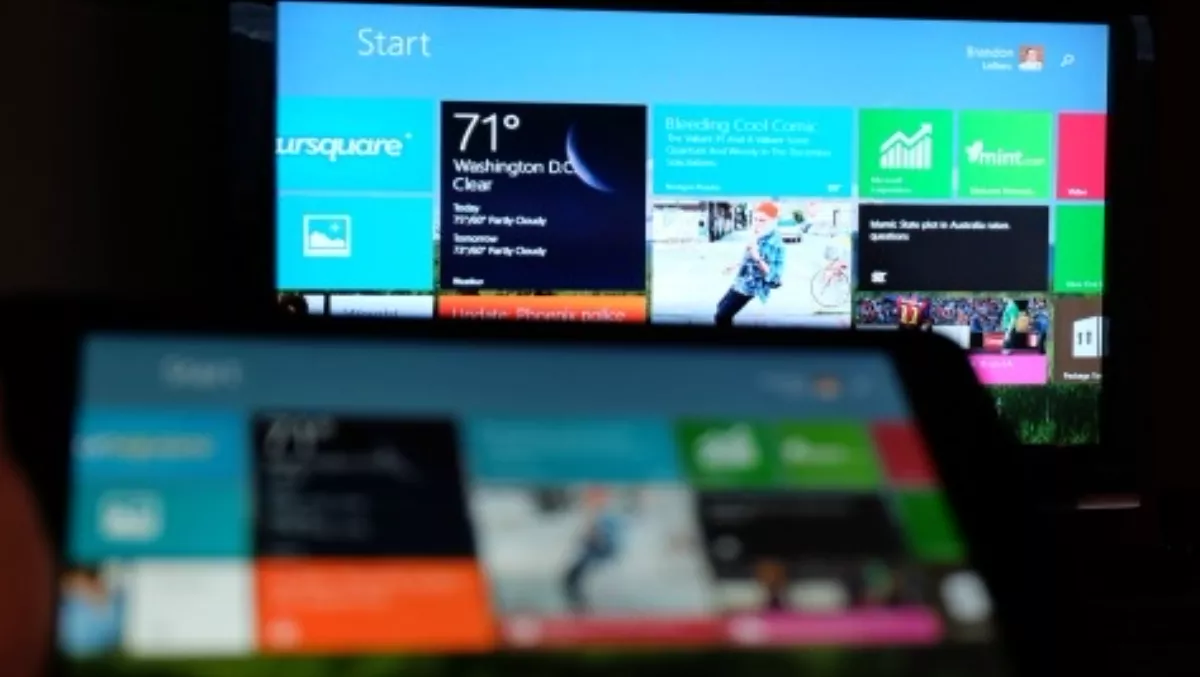
Hands-on review: Microsoft Wireless Display Adapter
Its name mightn't sound all that exciting, but the Microsoft Wireless Display Adapter proved to be an incredibly useful bit of gear that did exactly what it says on the box.
Plugging this wee widget into a spare HDMI port and USB port on a telly allowed me to wirelessly* beam content to my telly using a Windows phone/Surface Pro.
Look and feel
The Microsoft Wireless Display Adapter a pretty non-descript widget (which makes considerable sense as it's designed to unobtrusively and discretely tuck away behind a TV). Looks-wise it resembles a USB memory stick. At one end there's a cap, which when removed, reveals an HDMI connector and USB cable. The USB cable plugs into a USB socket on your telly, supplying power to the Wireless Display Adaptor.
While most recent TVs have a built in USB port for multimedia playback, older models may not. If this is the case, you'll probably need to purchase a USB compatible power adaptor (which can be had from Jaycar or Dick Smith Electronics). Microsoft also bundle a small HDMI extension cable which can also help when space behind the TV is cramped.
Another Chromecast?
While you could argue that the Wireless Display Adaptor is a case of Microsoft following the wildly successful Chromecast, the silver lining is that by being second, Microsoft got to see where the issues where and iron out the kinks in order to build a better widget.
The not so secret sauce to this is that the Wireless Display Adaptor uses Miracast. This means that unlike the Chromecast, it doesn't need a separate Wi-Fi router to work as it'll communicates directly with whichever device the video footage is being beamed from. This make the adaptor ideal for travellers as it'll work with an HDMI equipped hotel TV when the Chromecast won't (unless you want to muck about setting up a personal Wi-Fi hotspot).
Although the wireless Display Adaptor costs around $30 more than the Chromecast, at $99.95 it is still reasonably affordable.
In use
The sheer usefulness of being able to beam content to a screen without the grief and clutter associated with cables can't be overstated. This hasn't escaped the attention of Microsoft according Director of the Consumer Channels Group for Microsoft, David Rayner;
"With the launch of the Microsoft Wireless Display Adaptor we are providing the easiest and most reliable connection device to allow people to connect all Miracast enabled Windows and Android devices to big screens both at home and at work. We felt there was an opportunity to make the connection of a device to a bigger screen easier for our customers and to allow them to stream both productivity and entertainment content from their device to the bigger screen.
Being able to share a presentation, engage in a spot of gaming or stream media off my phone/tablet has proved insanely useful, transforming the smartphone that is almost permanently glued to my hand into an even more invaluable (and dare I say it addictive) part of my daily routine.
Connecting up using a Windows 8.1 powered phone was a largely seamless 5 second task. This said, my Samsung Galaxy S5 refused to play ball and wouldn't connect no matter what I tried.
Hooking it up
Getting everything hooked up was so idiot proof that even I got it right first time. Installation was an easy process of plugging the Wireless Display Adapter into a spare HDMI port on your TV, making sure the USB cable is also plugged in for power. Select the HDMI input on your telly and you'll see a Microsoft logo with a reassuring "Ready to connect" message.
Connecting using a surface pro was seamless and instant. While my Samsung Galaxy refused to connect, my Nexus 5 worked like a charm using the cast screen function under settings.
The Wireless Display Adapter can display content up to 1,920x1,080 and audio in stereo or 5.1 surround.
There was a noticeable delay between my device and output to the TV. This limits the wireless display adaptor for gaming, but for tasks such as Skype, PowerPoint, consuming media and sharing photos, it worked like a charm.
Whereas you need a suite of apps for the Chromecast (and there is a solid collection of Chromecast apps available), the Wireless Display Adaptor mirrors your PC/smartphones screen so you don't need a specific apps to get up and running. I was also able to use my TV as a second monitor and span rather than just mirroring on screen content.
Verdict
The Wireless Display Adapter really comes into its own when travelling. Where the Chromecast needs to be connected to the Wi-Fi as the device you're streaming from, this isn't necessary with the Wireless Display Adaptor. When in a hotel room, this limitation renders the Chromecast useless (unless you wish to set up a personal Wi-Fi hotspot using a smartphone).
The Wireless Display Adapter sets up a direct connection between your device and the TV with little fuss or effort. For watching video in a hotel room or checking out holiday photos, it is pretty hard to beat. If you're a Microsoft surface or windows phone user the Wireless Display Adaptor is likely to be a pretty compelling choice. Based on my experience, Android users may however want to check compatibility before buying.
*No AV cables were harmed in the writing of this review.

